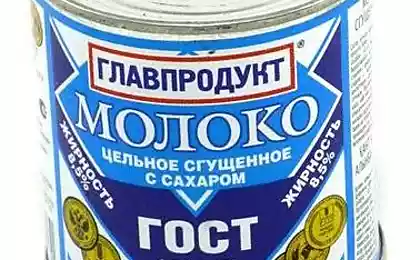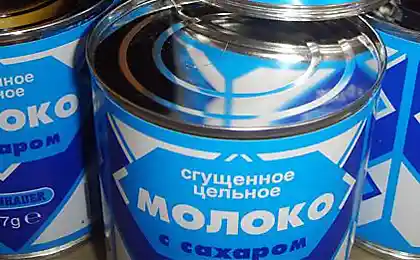1879
History of condensed

According to some reports, the idea of obtaining condensed milk was proposed in 1810 by the Frenchman Nicolas Apper. This Parisian confectioner found that if you boil a jar of juice, its contents will not spoil for a long time. And after many experiments, he found that milk is better stored in sealed tin cans, which also do not burst when boiled. However, this invention was patented by American Gale Borden on August 19, 1856. In 1850, Borden, taking the idea of a Frenchman as a basis, created a "meat cracker", and in 1851 he was invited to London for a trade exhibition. Returning, he witnessed the death of several children due to poisoning with poor-quality milk sick cows. From that moment Borden began to thicken the milk.
In 1858, the world's first condensed plant opened in the United States, and with the outbreak of the Civil War, the product began to be produced in huge quantities to supply them to the soldiers of the North. Borden's postwar fame allowed him to set up several new factories, hand over a thriving company to his sons, and end his days in a small Texas town named Borden in his honor.

The first condensed milk plant in Russia appeared in Orenburg.
Condensed milk produced in the USSR was packaged in tin cans with white, blue and paper labels. This image was so constant from decade to decade that its design is still used as a kind of “brand”. At the same time, there are variations of boiled condensed milk, also using the packaging design of the original, but painted in brown (by the color of boiled condensed milk) colors.
To supply northern and other hard-to-reach areas, condensed milk was produced in tin cans with a volume of 3 liters. The shape of the can and the label design were the same.
In Soviet times, caramelized (boiled) condensed milk with sugar was not industrially produced, but was prepared at home by additional cooking of ordinary condensed milk directly in a jar in a water bath for several hours. When boiling water, the banks usually explode.
Condensed milk is obtained by evaporating whole milk with or without 12% crystalline sugar.
The main indicator of the quality of condensed milk (both ordinary and boiled) is the percentage of fats and moisture, which, based on GOSTs, should be not lower than 8.5% and not higher than 26.5%, respectively. In the manufacture of condensed milk, only natural milk fats are allowed, the use of vegetable fats is prohibited, and it should be called “whole condensed milk with sugar”.























